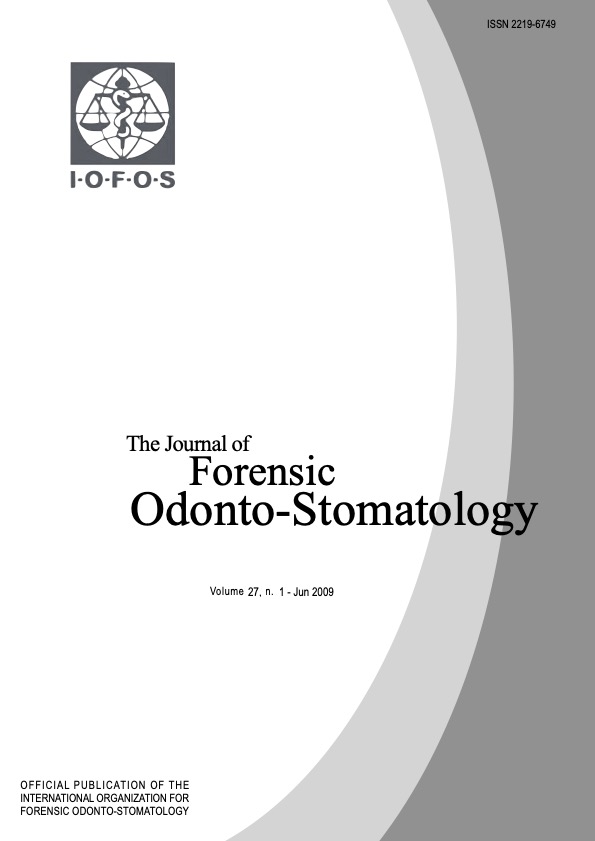Biomechanical approach to human bitemark reconstruction
Abstract
This paper investigates the changes in upper and lower dental bite records that occur when the anterior teeth occlude into a three-dimensional rather than a flat object. Methods: anterior bite registrations were obtained from 20 volunteers with full and unrestored dentitions. As a three- dimensional, life-like bite target we cast a silicone replica from the impression of an actual arm, fitted with a rigid bony interior. Each participant was asked to bite into a single layer of softened bite registration wax wrapped around the same location on the fake arm, as well as into a flat wafer of the same material. Upper and lower bite registrations were then scanned in the same location on a flat bed scanner. We analysed the sizes of the different bite marks by means of landmark- and semi-landmark analysis to calculate Procrustes distances between tooth outlines. In order to analyse shape variation between the two types of bite registration we carried out principal components analyses on the partial warp scores. These were derived from partial Procrustes coordinates aligned by means of thin-plate spline decomposition based on a bending energy matrix.
Our results show that there are significant differences in the shape of the upper or lower teeth when they occlude into a flat or three- dimensional target.
We conclude that the use of a traditional flat bite registration in human bitemark reconstruction and analysis has to be seriously questioned.

